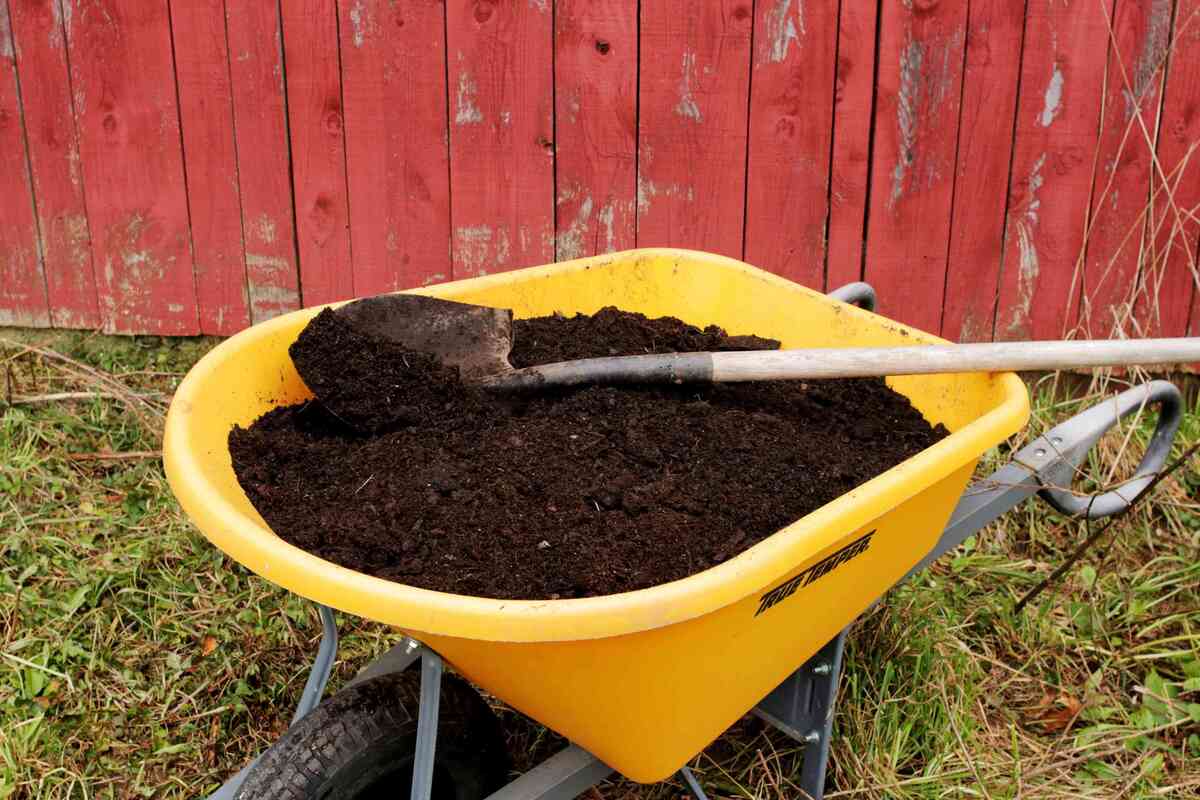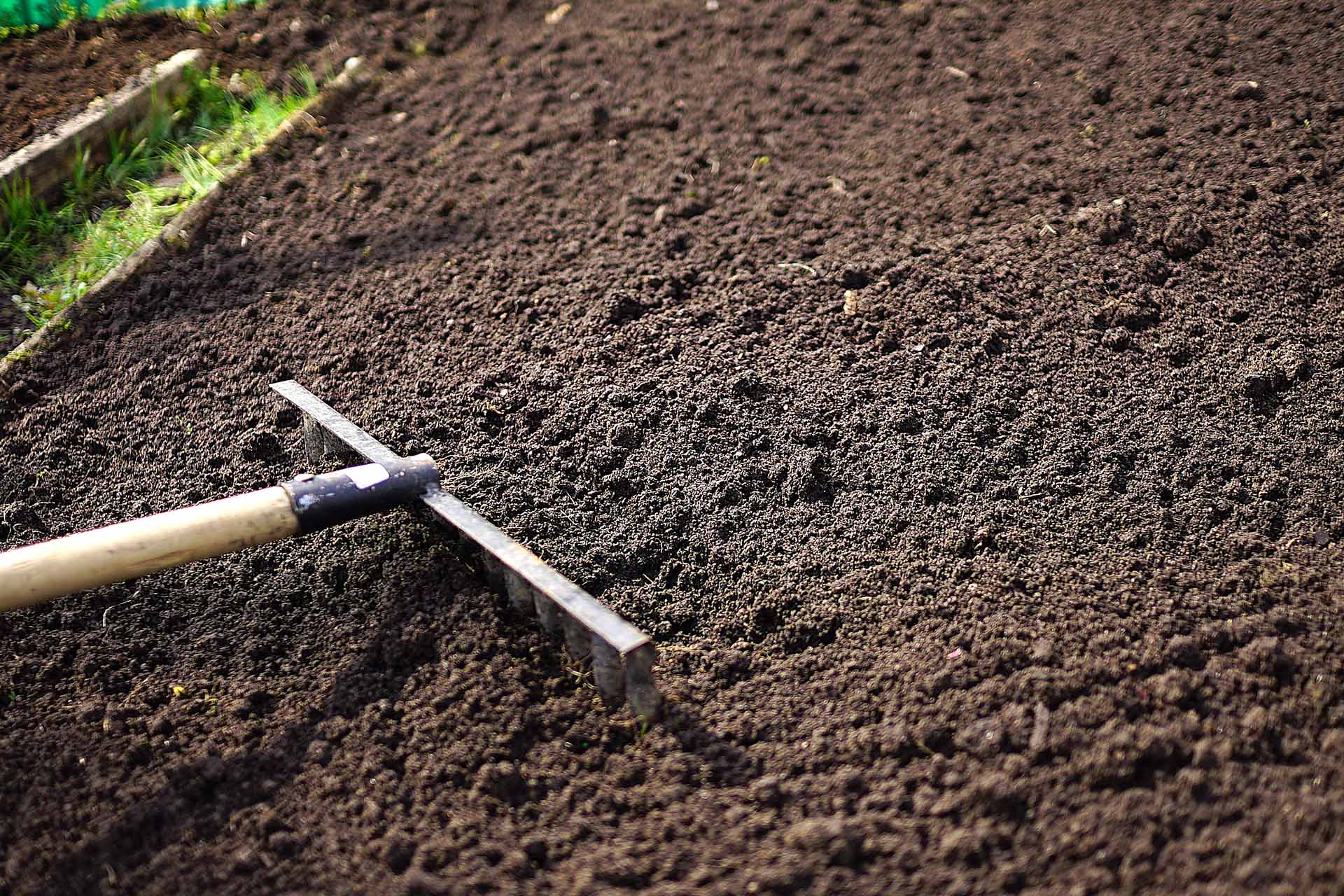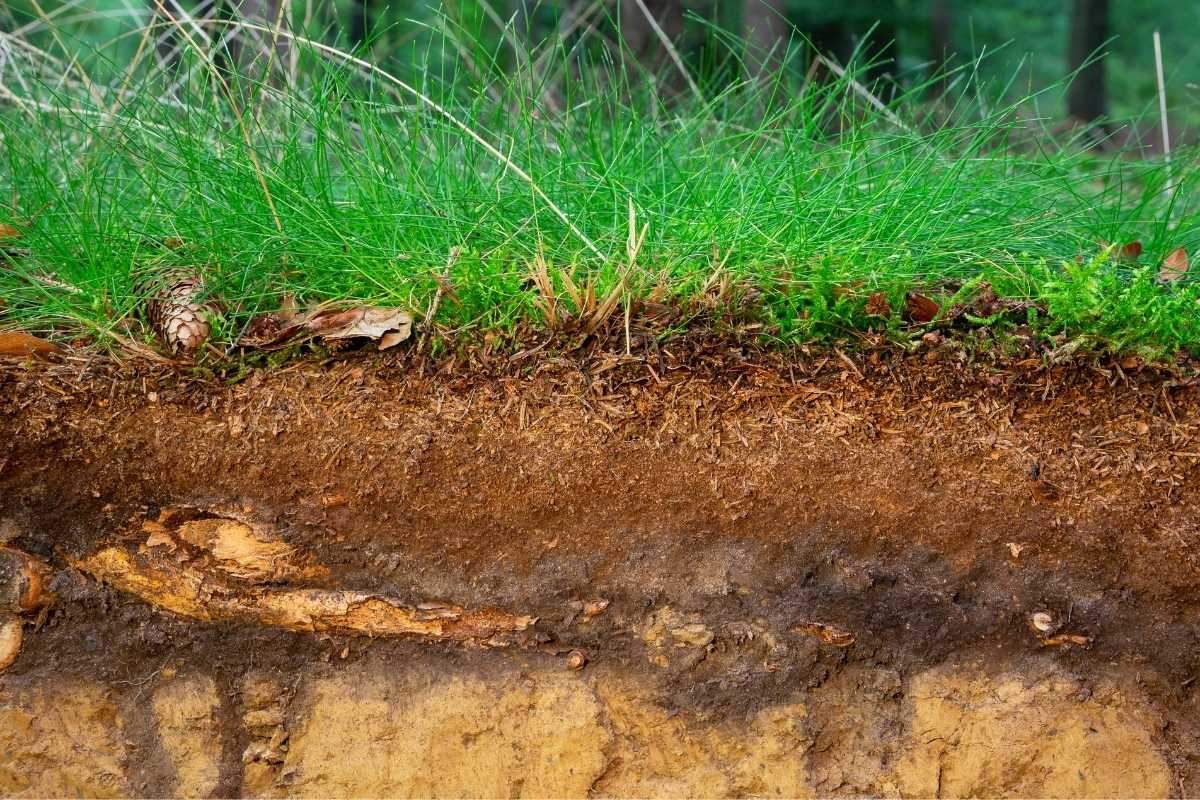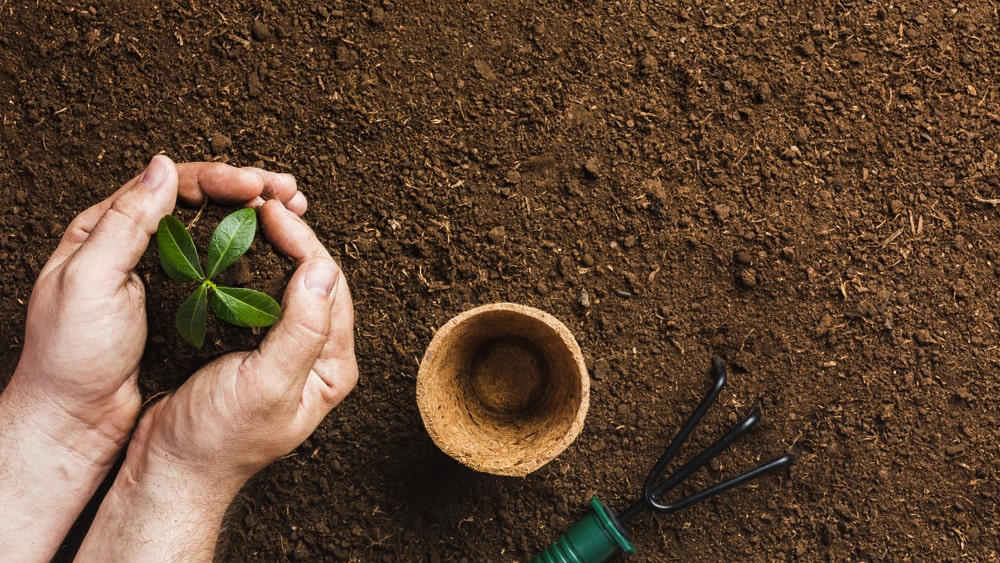Home>Gardening Basics>Understanding Soil>How To Turn Topsoil Into Garden Soil


Understanding Soil
How To Turn Topsoil Into Garden Soil
Modified: February 9, 2024
Learn how to transform topsoil into nutrient-rich garden soil with our comprehensive guide. Gain a deep understanding of soil composition and optimize your gardening experience.
(Many of the links in this article redirect to a specific reviewed product. Your purchase of these products through affiliate links helps to generate commission for Chicagolandgardening.com, at no extra cost. Learn more)
Table of Contents
Introduction
Welcome to the world of gardening! Whether you are a seasoned gardener or just starting out, one of the essential elements for a successful garden is the quality of the soil. Soil serves as the foundation for plant growth, providing nutrients, water retention, and the necessary structure for roots to thrive. While there are different types of soil available, such as clay, sand, and silt, one particular type that plays a crucial role is topsoil.
Topsoil is the uppermost layer of soil, typically ranging from 2 to 8 inches in depth. It is rich in organic matter, minerals, and microorganisms, making it ideal for plant growth. However, topsoil alone may not always meet the specific requirements of different plants and gardening purposes. It may lack certain nutrients or have an imbalanced pH level, which can hinder plant growth and productivity.
This is where the process of turning topsoil into garden soil becomes valuable. By making some adjustments and amendments, you can transform your basic topsoil into a nutrient-rich, well-draining, and fertile medium that promotes robust plant growth and maximizes yields.
In this article, we will explore the reasons why converting topsoil into garden soil is beneficial and guide you through the steps of achieving this transformation. Whether you are preparing a vegetable garden, creating a flower bed, or revamping an existing planting area, understanding how to improve your soil will greatly enhance your gardening endeavors.
What is Topsoil?
Topsoil refers to the top layer of soil found on the Earth’s surface. It is primarily made up of a combination of mineral particles, organic matter, water, air, and living organisms. This layer is crucial for plant growth as it contains the highest concentration of essential nutrients and provides the optimal environment for root development.
Topsoil forms over time as a result of natural processes, including weathering, erosion, and the decomposition of organic materials. It is typically darker in color compared to the layers beneath it, thanks to the presence of organic matter like leaf litter, decomposed plants, and animal remains. The organic matter not only improves the soil’s fertility but also enhances its ability to retain moisture.
In addition to organic matter, topsoil also contains a mixture of mineral particles, such as sand, silt, and clay. The ratio of these components determines the soil’s texture and affects its drainage and nutrient-holding capacity. Sandy topsoil, for example, has larger particles, allowing water to drain more quickly and making it less fertile. On the other hand, clayey topsoil has smaller particles, leading to slower drainage and higher nutrient retention.
The depth of topsoil varies depending on the location and environmental factors. In some areas, it may be several feet deep, while in others, it may be only a few inches. Regardless of the depth, topsoil serves as a critical resource for plant growth, supporting the development of roots and providing the necessary nutrients for healthy plants.
Understanding the composition and characteristics of topsoil is essential for successful gardening. By analyzing and augmenting the topsoil, gardeners can create an optimal growing environment for their plants, ensuring optimal growth, health, and productivity.
Why Convert Topsoil into Garden Soil?
Converting topsoil into garden soil offers numerous benefits for your plants and overall gardening success. While topsoil is already rich in organic matter and nutrients, it may not always meet the specific requirements of the plants you wish to cultivate. Here are a few reasons why converting topsoil into garden soil is essential:
- Nutrient Optimization: Garden soil allows you to tailor the nutrient content to suit the needs of your plants. By amending the topsoil with organic compost, fertilizer, and other amendments, you can ensure a balanced nutrient profile, providing essential elements for growth and promoting healthier plants.
- pH Balancing: Different plants have different pH preferences. Topsoil may have a pH level that is not favorable for certain plants. By converting topsoil into garden soil, you can adjust the pH to create an optimal environment for specific plants. For example, adding lime to raise pH for alkaline-loving plants or sulfur to lower pH for acid-loving plants.
- Improved Drainage: Some topsoil may have poor drainage characteristics due to its texture or organic matter content. By modifying the soil structure through the addition of amendments like perlite, vermiculite, or coarse sand, you can improve drainage and prevent waterlogging, which can lead to root rot and other issues.
- Enhanced Moisture Retention: On the other hand, if you live in an arid region with sandy topsoil that drains too quickly, converting it into garden soil allows you to increase its water-holding capacity. Mixing in organic matter, such as compost or peat moss, helps retain moisture and ensures plants have access to consistent hydration.
- Reduced Weed Growth: Topsoil can sometimes contain weed seeds or residual rhizomes that can lead to unwanted weed growth. By converting the topsoil into garden soil, you can use weed-free or sterilized soil components to minimize the presence of weeds, giving your plants a better chance to thrive.
Overall, converting topsoil into garden soil gives you the opportunity to customize the growing medium to suit your specific gardening needs. It allows for better control over nutrient levels, pH balance, moisture retention, and drainage, ultimately ensuring healthier plants, stronger yields, and a more successful gardening experience.
Gathering Materials and Tools
Before embarking on the process of converting topsoil into garden soil, it’s important to gather the necessary materials and tools. Having everything prepared in advance will make the process smoother and more efficient. Here’s a list of what you’ll need:
- Topsoil: Start with a good quality topsoil as the base for your garden soil. Choose a reputable supplier or consider using the existing topsoil in your garden, if it is of suitable quality.
- Organic Compost: Compost is an excellent source of nutrients and organic matter. You can create your own compost by collecting kitchen scraps, yard waste, and other organic materials, or purchase it from a local garden center.
- Fertilizer: Depending on the nutrient needs of your plants, you may need specific fertilizers to provide essential elements. Look for fertilizers that are suitable for the type of plants you are growing, such as a balanced NPK fertilizer or one tailored to specific needs like a high-phosphorus fertilizer for flowering plants.
- Amendments: Additional amendments may be required to adjust pH levels or improve soil structure. This can include materials like agricultural lime to raise pH, sulfur to lower pH, or gypsum to improve heavy clay soils.
- Testing Kit: To accurately assess the nutrient levels and pH of your topsoil, consider getting a soil testing kit. This will help you determine the specific needs of your soil and guide you in making the necessary amendments.
- Tools: Gather the essential gardening tools such as a shovel or garden fork for mixing the soil, a rake for leveling and smoothing, and a wheelbarrow or buckets for transporting materials. You may also need a pH testing probe, a soil moisture meter, and a garden hose for irrigation purposes.
- Protective Gear: Don’t forget to prioritize your safety by wearing appropriate protective gear, such as sturdy gloves, a sun hat, and comfortable clothing.
By gathering these materials and tools beforehand, you will have everything you need to begin the process of converting your topsoil into enriched garden soil. Having everything on hand will save you time and allow for a seamless transition from gathering materials to starting the soil conversion process.
Steps to Turning Topsoil into Garden Soil
Now that you have gathered all the necessary materials and tools, let’s dive into the step-by-step process of turning topsoil into garden soil:
- Prepare the area: Clear the area where you want to create your garden bed. Remove any weeds, rocks, or debris that may impede the growth of your plants.
- Test the soil: Use a soil testing kit to determine the pH level and nutrient content of your topsoil. This will help you identify any deficiencies or imbalances that need to be addressed.
- Amend the soil: Based on the results of your soil test, add the necessary amendments to improve the pH and nutrient levels of the topsoil. Incorporate organic compost to increase the organic matter content and the soil’s fertility.
- Mix the soil: Use a shovel or garden fork to thoroughly mix the amendments and topsoil together. Break up any clumps and ensure an even distribution of the materials for consistent nutrient and pH levels throughout the soil.
- Level and smooth the surface: Use a rake to level the soil surface, removing any excess lumps or debris. Smooth out the soil to create an even surface for planting.
- Water the soil: Water the newly amended soil thoroughly. This will help settle the amendments, encourage microbial activity, and ensure proper hydration for your plants.
- Let it rest: Allow the amended soil to rest for at least a week before planting. This will give the amendments time to integrate with the topsoil and stabilize the nutrient and pH levels.
- Monitor and adjust: Regularly monitor the moisture levels and nutrient requirements of the soil. Adjust irrigation and fertilization as needed to maintain optimal growing conditions for your plants.
- Mulch: After planting your desired plants, apply a layer of organic mulch around them. Mulch helps conserve moisture, regulate soil temperature, suppress weed growth, and gradually add organic matter back into the soil as it breaks down.
Following these steps will help you successfully convert your topsoil into nutrient-rich garden soil. Remember to be patient and attentive to the needs of your plants as they grow in the newly amended soil. Regular maintenance and care will ensure a thriving garden and fruitful harvests for years to come.
Testing and Amending Soil
Testing and amending the soil is a crucial step in the process of converting topsoil into garden soil. By conducting soil tests and making informed amendments, you can ensure that your soil is optimized for the specific needs of your plants. Here’s how to test and amend your soil:
- Perform a soil test: Use a soil testing kit to assess the pH level and nutrient content of your topsoil. Follow the instructions provided with the kit to obtain accurate results.
- Interpret the test results: Once you have the test results, analyze them to understand the current state of your soil. Look for any nutrient deficiencies or imbalances, as well as the pH level of your topsoil.
- Adjust the pH: If the soil pH is not within the desired range for your plants, make the necessary adjustments. For example, if the pH is too acidic, you can add agricultural lime to raise the pH. If the pH is too alkaline, you can use elemental sulfur to lower it.
- Address nutrient deficiencies: If the soil test reveals nutrient deficiencies, choose a suitable fertilizer or amendment to rectify the imbalance. Organic compost, aged manure, or specific nutrient-rich fertilizers can help restore nutrient levels and provide the necessary elements for healthy plant growth.
- Incorporate amendments: Once you have identified the amendments needed, mix them into the topsoil thoroughly. Use a shovel or garden fork to ensure even distribution and proper integration with the existing soil.
- Re-test and monitor: After amending the soil, re-test it periodically to evaluate the effectiveness of the amendments. This will allow you to make any additional adjustments if needed to maintain optimal soil conditions.
- Maintain soil health: Beyond the initial amendments, it’s important to prioritize soil health by adding organic matter regularly. This can be accomplished through the use of compost, cover crops, crop rotation, and mulching. These practices will replenish nutrients, improve soil structure, and support beneficial microorganisms.
Remember that soil testing should be done periodically, especially if you notice any signs of nutrient deficiencies or if your plants are not performing as expected. Regular soil testing and amending will ensure that your garden soil remains in optimal condition and provides the necessary support for healthy plant growth.
Conclusion
Converting topsoil into garden soil is a valuable process for any gardener looking to create optimal growing conditions. By understanding the composition of topsoil and making necessary adjustments, you can ensure that your plants receive the nutrients, pH balance, and soil structure they need for healthy growth and abundant yields.
Throughout this article, we have explored the significance of topsoil and why converting it into garden soil is beneficial. We have discussed the importance of nutrient optimization, pH balancing, improved drainage, enhanced moisture retention, and reduced weed growth. These factors play a vital role in creating an ideal growing environment for your plants.
In addition, we have covered the steps involved in turning topsoil into garden soil. From preparing the area to testing and amending the soil, each step contributes to creating a nutrient-rich, well-balanced soil medium. By following these steps, you can ensure that your plants have the best possible start and a healthy foundation for growth.
Remember, maintaining the health of your garden soil is an ongoing process. Regular monitoring, testing, and amending, as well as the addition of organic matter, will help sustain optimal soil conditions and support long-term plant health.
So go ahead and convert your topsoil into garden soil! With the right materials, tools, and knowledge, you can create a thriving garden that will reward you with beautiful blooms, vibrant vegetables, and an abundance of greenery.





